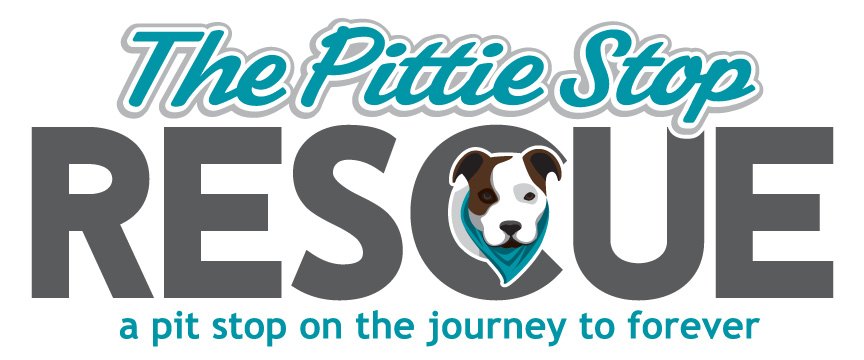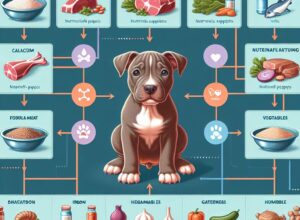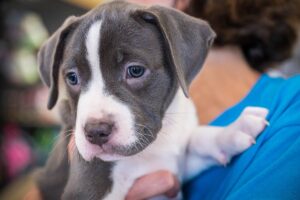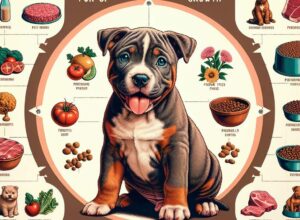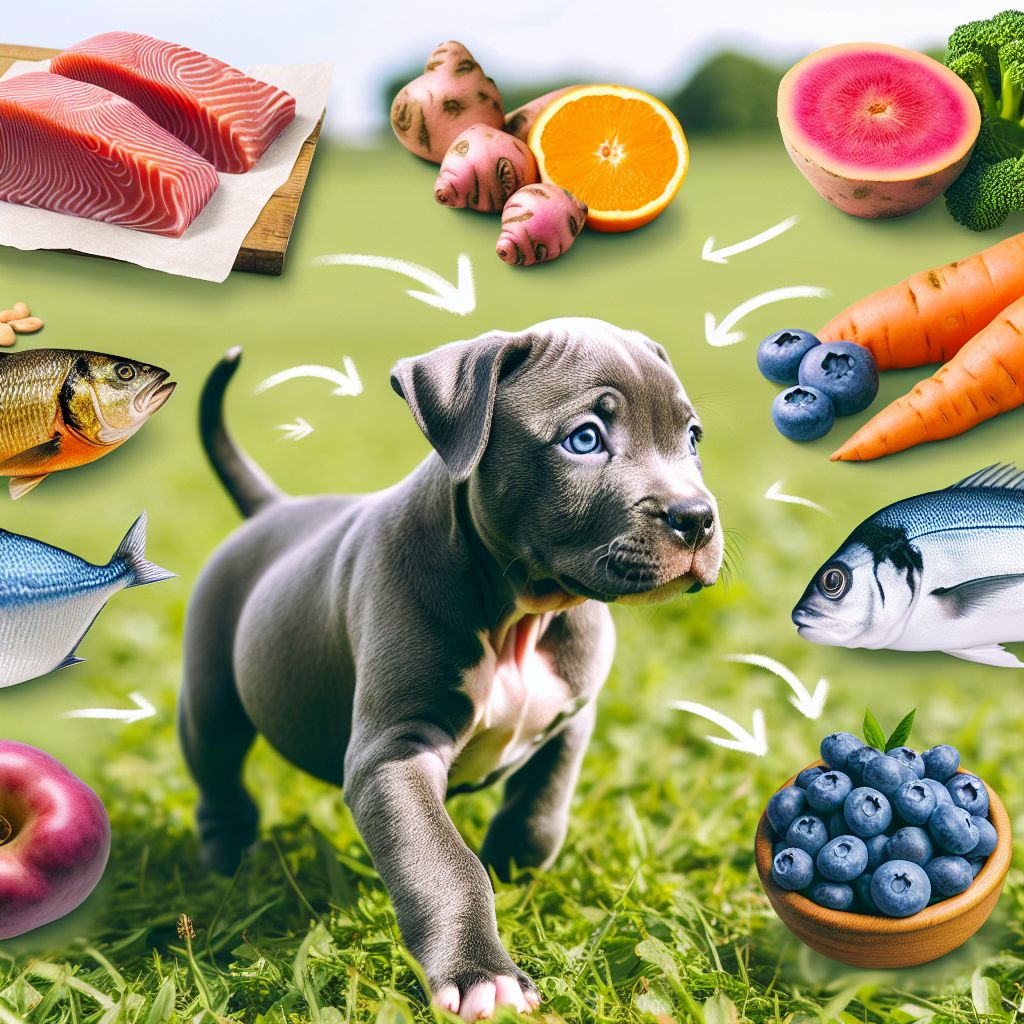
Key Takeaways
- A balanced diet of proteins, fats, and carbohydrates is essential for a pitbull puppy’s coat and skin health.
- Including omega-3 and omega-6 fatty acids in your puppy’s diet can lead to a shinier coat and healthier skin.
- Managing food allergies with hypoallergenic options can prevent skin issues and improve overall health.
- Adjusting your pitbull puppy’s diet as they grow ensures they receive the right nutrients for their developmental stage.
- Reading dog food labels and understanding nutritional adequacy statements helps choose the best food for your puppy.
Unlocking the Secrets to a Shiny Pitbull Coat
Have you ever seen a pitbull puppy with a shiny coat that looks like it’s been polished? That’s the sign of a healthy diet. A glossy coat and supple skin are more than just about good looks; they indicate your puppy’s well-being. And guess what? You have the power to give your pitbull that radiant glow, starting with what’s in their bowl.
Optimal Nutrition for Radiant Skin
Let’s get down to brass tacks. A pitbull puppy’s skin is like a canvas that reflects their overall health. If the diet isn’t up to scratch, it shows. Dry, flaky skin and a dull coat are telltale signs. The key to avoiding this is ensuring your puppy’s diet is packed with the right nutrients. This means a well-rounded meal plan that covers all their dietary needs.
High-Quality Ingredients for a Glossy Coat
It’s not just about feeding your pitbull puppy; it’s about feeding them right. High-quality ingredients are the secret sauce to a lustrous coat. Think whole meats, healthy fats, and complex carbohydrates. These ingredients provide the energy your pup needs to play and the building blocks for a healthy body inside and out.
Vital Nutrients Your Pitbull Puppy Needs
Every pitbull puppy is a bundle of energy with a fast-growing body. To support their development, you need to focus on three main nutrients: proteins, fats, and carbohydrates. Each plays a unique role in keeping your puppy’s coat shiny and skin healthy. For a more detailed guide on what to include in their diet, read our pitbull puppy nutrition guide.
Proteins: Building Blocks for Health
Proteins are like the Lego bricks of your puppy’s body. They help build muscles and repair tissues, and yes, they’re crucial for that shiny coat. A pitbull puppy needs more protein than adult dogs because they’re building their bodies at a rapid pace.
Best Protein Sources for Pitbull Puppies
When it comes to protein, quality and digestibility matter. Here’s where you should be looking:
- Whole chicken or turkey (not just by-products)
- Fish, especially those rich in omega-3 fatty acids like salmon
- Lean red meats like beef or lamb
These protein sources are not only delicious for your puppy but also packed with the essential amino acids they need.
Understanding Protein Quality
But hold on, not all proteins are created equal. The quality of protein in your puppy’s food is determined by how well it can be used by their body. Animal-based proteins are typically more complete, meaning they have all the amino acids your pitbull needs to thrive.
Fats: Essential for a Silky Coat
Now, let’s talk about fats. They’re not something to shy away from; they’re essential. Fats keep your pitbull puppy’s coat silky and skin moisturized. Plus, they’re a concentrated source of energy, which is vital for your active little friend.
The Role of Omega-3 and Omega-6 Fatty Acids
Specifically, you want to focus on omega-3 and omega-6 fatty acids. They’re the superstars when it comes to skin and coat health. Omega-3s, found in fish oil and flaxseed, can help reduce inflammation and give that coat a beautiful shine. Omega-6s, found in poultry fat and vegetable oils, are great for skin health.
Identifying Healthy Fat Sources
So where do you find these healthy fats? Look for foods that include: diet tips for your pitbull puppy.
- Fish oil or flaxseed oil for omega-3s
- Chicken fat or safflower oil for omega-6s
These sources will help keep your pitbull’s skin and coat in top condition. For more information on how diet affects your dog’s skin and coat, read Nutrition, Skin, and Dogs.
Carbohydrates: Energy for Playful Pups
Carbohydrates are often misunderstood. They’re not just fillers; they provide essential energy. And for a pitbull puppy, energy is what life’s all about. Good carbs come from vegetables, fruits, and whole grains. They give your puppy the fuel they need to explore, learn, and grow.
Selecting Complex Carbs for Sustained Energy
Opt for complex carbs like sweet potatoes, brown rice, or oats. They release energy slowly, which is perfect for a pitbull puppy’s active lifestyle. Simple carbs, on the other hand, can cause spikes in blood sugar and are best avoided.
Balancing Carb Intake with Activity Levels
But it’s all about balance. Too many carbs and not enough play can lead to an overweight pup. So, match your puppy’s carb intake with their activity level. A good rule of thumb is to adjust portions based on their energy output. More play means more carbs!
Stay tuned for the next part where we’ll dive into how the right diet can prevent skin problems and support your pitbull puppy’s long-term health.
Preventing Skin Problems with the Right Diet
As much as we wish for our pitbull puppies to have perfect skin and coats, sometimes they face challenges. The good news is, that many skin problems can be alleviated or even prevented with the right diet. It’s all about knowing what to feed your pup to keep their skin in tip-top shape.
Allergy Management Through Nutrition
Allergies can be a pitbull’s nemesis, often leading to itchy, irritated skin. The culprit? It could be something in their diet. It’s crucial to identify and manage food allergies early on to prevent discomfort and more serious skin conditions.
Common Pitbull Food Allergens
Some pitbull puppies may react to certain proteins or grains. The usual suspects include beef, dairy, wheat, egg, chicken, lamb, soy, pork, rabbit, and fish. For owners of puppies with sensitive stomachs, understanding these common pitbull food allergens is crucial to managing their health.
- Beef
- Chicken
- Dairy
- Wheat
Spotting an allergy can be tricky, but signs like excessive scratching, ear infections, or gastrointestinal upset are clues it’s time to investigate your pitbull puppy’s diet.
Hypoallergenic Diet Options
If you suspect your puppy has a food allergy, it’s best to consult with your vet. They might suggest a hypoallergenic diet. These diets often feature novel proteins and carbohydrates your pup hasn’t been exposed to, reducing the risk of an allergic reaction.
Combatting Dry, Itchy Skin
Dry and itchy skin isn’t just uncomfortable for your puppy; it can lead to more serious issues if not addressed. Thankfully, the right diet can help combat these problems before they escalate.
Nutrient-rich diets for Skin Hydration
To keep your pitbull’s skin hydrated and healthy, look for diets rich in:
- Vitamin E
- Zinc
- Fatty acids like omega-3 and omega-6
These nutrients support skin health and can help maintain the natural oils that protect your pup’s skin.
Supplements to Enhance Skin Health
Sometimes, your pitbull puppy might need a little extra help. Supplements like fish oil can be a game-changer for skin health. Just be sure to get the dosage right—your vet can help with that.
Feeding Your Pitbull Puppy for Long-Term Health
What you feed your pitbull puppy today lays the foundation for their future health. A balanced diet during these formative months is critical for their development and can set them up for a healthy adulthood.
Puppy Growth: Tailoring Diet for Developmental Stages
As your pitbull puppy grows, their dietary needs will change. It’s important to tailor their diet to support each stage of their development. This means gradually transitioning from a high-calorie puppy formula to one that’s suitable for their increasing size and energy levels.
Adjusting Portions as Your Puppy Matures
Here’s a quick guide to adjusting portions:
- 2-4 months old: Feed 3-4 times a day with a high-calorie puppy formula.
- 4-6 months old: Begin to reduce feeding frequency to 2-3 times a day while monitoring growth and energy.
- 6-12 months old: Transition to twice daily feedings with a diet appropriate for their size and activity level.
Remember, these are general guidelines. Your puppy’s needs may vary, so it’s best to consult with your vet.
Example: When my pitbull, Bruno, was a puppy, he had boundless energy. I worked closely with my vet to find the right balance of nutrients to support his growth and keep his coat shiny. We settled on a high-protein diet with plenty of healthy fats, and the difference was night and day. He grew into a strong, healthy adult with a coat that always gets compliments at the dog park.
The Role of Calcium and Phosphorus in Bone Growth
Calcium and phosphorus are the dynamic duo for your pitbull puppy’s bone growth. But it’s not just about quantity; the ratio is key. Too much calcium can harm your puppy, leading to skeletal issues. Stick to dog food that’s formulated for puppies to ensure the balance is just right.
Building a Strong Immune System Through Diet
A robust immune system starts with what’s in the food bowl. Ensuring your pitbull puppy gets a diet rich in antioxidants will help them fight off illness and stay healthy.
Antioxidants: Supporting Your Pup’s Defense Systems
Antioxidants like vitamins C and E, selenium, and beta-carotene are vital for a strong immune system. You’ll find these in fresh fruits and vegetables, so incorporating them into your puppy’s diet can provide a natural immune boost.
Probiotics and Gut Health
A healthy gut is a cornerstone of overall health. Probiotics can support your puppy’s digestive system, helping them absorb nutrients more effectively. This, in turn, can bolster their immune system and contribute to healthier skin and a shinier coat.
Navigating Pitbull Puppy Food Choices
Choosing the right food for your pitbull puppy can be overwhelming. The key is to focus on high-quality ingredients that meet their nutritional needs. Learn to read dog food labels, and you’ll be able to make informed choices for your pup.
When selecting a puppy food, consider these factors:
- Named protein sources (like “chicken” instead of “poultry”)
- Fat sources rich in omega fatty acids
- Complex carbohydrates for sustained energy
- No artificial colors, flavors, or preservatives
By focusing on these key areas, you’ll ensure your pitbull puppy has the best start in life, paving the way for a healthy and happy adulthood. In the next part of this article, we’ll look at how to decode dog food labels and make the switch to adult dog food when the time comes.
Deciphering the labels on dog food bags is like learning a new language. But once you get the hang of it, you’ll be fluent in picking the best options for your pitbull puppy’s diet.
Decoding Dog Food Labels
When you’re standing in the pet food aisle, scanning the shelves, every bag seems to promise the world. But the real story is on the back, in the fine print. Let’s break that down. For more detailed information on what to look for, consider reading about canine nutrition and how it affects your dog’s coat and skin.
Ingredient List Breakdown
Ingredients are listed by weight, so what you see first is what you get most of. Look for whole meats and identifiable animal proteins at the top of the list. These provide the high-quality protein your pitbull puppy needs for a healthy coat and skin.
Understanding Nutritional Adequacy Statements
These statements tell you if the food meets the nutritional levels established by the AAFCO. If it says “complete and balanced,” that’s a green light. It means the food provides all the nutrients your puppy needs in the right amounts.
Making the Switch to Adult Dog Food
As your pitbull puppy approaches adulthood, their dietary needs shift. This transition is a gradual process that should be handled with care to avoid upsetting their stomach.
Timing and Tips for Transitioning Diets
Typically, you’ll start transitioning your pitbull to adult food around 12 to 18 months of age. Do it slowly, over a week or two, by mixing in more and more adult food with their puppy food. This helps their digestive system adjust.
Continuing Coat Care into Adulthood
Even as your pitbull moves into adulthood, maintaining a diet rich in the right nutrients is crucial for keeping their coat and skin in prime condition. Keep an eye on those omega fatty acids and high-quality proteins.
FAQs
How Often Should I Feed My Pitbull Puppy?
Puppies have small stomachs and high energy needs, so they require more frequent meals than adult dogs. Generally, you should feed your pitbull puppy three to four times a day. As they grow, you can reduce the frequency of their meals, but increase the portion size accordingly.
Can Human Foods Benefit My Pitbull Puppy’s Coat?
Absolutely! Some human foods can provide a nutritional boost to your puppy’s diet. For instance, cooked eggs are an excellent source of biotin, which supports healthy skin and coat. Salmon, rich in omega-3 fatty acids, can also promote a shiny coat. Just remember, these should be treats, not staples.
What Are the Signs of a Poor Diet in Pitbull Puppies?
A lackluster coat, itchy skin, and a drop in energy levels can all point to dietary deficiencies. If your pitbull puppy’s coat isn’t gleaming or they’re constantly scratching, it might be time to re-evaluate their food. Energy dips, especially in a breed known for vigor, are another red flag that the diet might be lacking.
Remember, a balanced diet is the foundation of your puppy’s health. When Bruno started scratching incessantly, I knew something was off. A chat with the vet and a few diet tweaks later, his coat was back to its glossy glory, and the scratching was a thing of the past.
Is Grain-Free Food Better for My Pitbull’s Skin and Coat Health?
Grain-free diets have become popular, but they’re not necessarily superior. Unless your pitbull puppy has a specific allergy to grains, there’s no need to avoid them. Whole grains can provide valuable nutrients and are a good source of energy.
How Can I Tell If My Puppy Is Allergic to Certain Foods?
Food allergies in puppies manifest in various ways, including skin irritation, ear infections, and gastrointestinal symptoms. If you notice these signs, take note of what your puppy has been eating and talk to your vet. They might recommend an elimination diet to pinpoint the problem.
Maintaining a good diet is crucial for the health of your pitbull puppy. Not only does it affect their overall health, but it also has a significant impact on their coat and skin. A balanced diet rich in essential nutrients can promote a shiny coat and healthy skin, reducing the chances of skin allergies and conditions. It’s important to consult with a veterinarian to create a tailored diet plan that meets all the nutritional needs of your growing pitbull puppy.
